Location: Toronto, Ontario
Date of Completion: 2008
Architect: Alsop Architects Ltd. in joint venture with Robbie/Young + Wright Architects. IBI Group is the legacy firm of Robbie/Young + Wright Architects
Nominated by: Chris Glover, MPP (Spadina–Fort York)
“…It’s braver, it’s courageous. It’s saying to the world that Toronto doesn’t bring in what other places have to make itself a world-class city. It’s saying Toronto leads the way.” - Dr. Nicholas Olsberg, Director of the Canadian Centre for Architecture
Floating above McCaul Street, this tabletop structure is a remarkable building not just for its bold design, but also for its influence far beyond its walls – catalyzing the transformation of a neighbourhood and reinvigorating the image of the city.
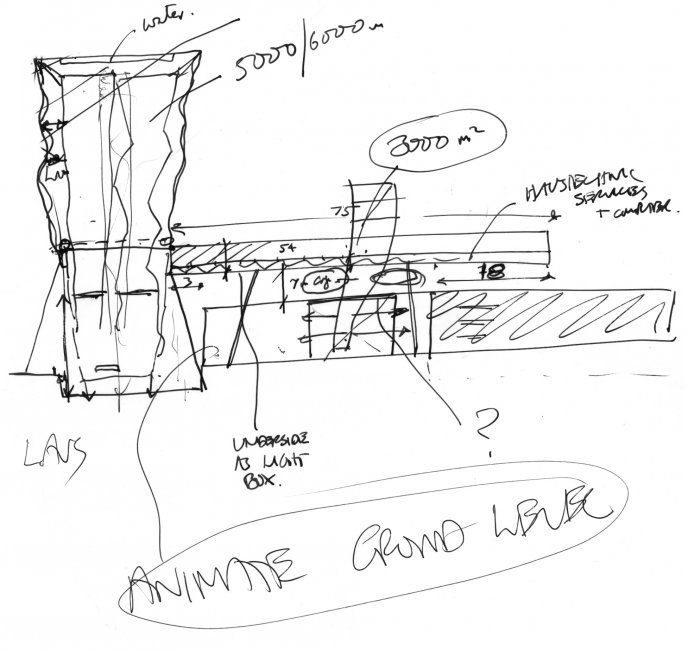
Sketches by Will Alsop courtesy of aLL Design
A Collaborative and Negotiated Process
Originally envisioned by the architect as a potential tower, the whimsical floating structure with colourful pencil-like legs is the result of extensive community consultation. As the architect put it, “It became what it had to be.” 1
Through a series of workshops and discussions, the design team engaged faculty, staff, students, neighbours and the wider community to collaboratively develop the building’s final form and placement, exchanging ideas and views and attentively listening to the community’s ambitions, desires and concerns.
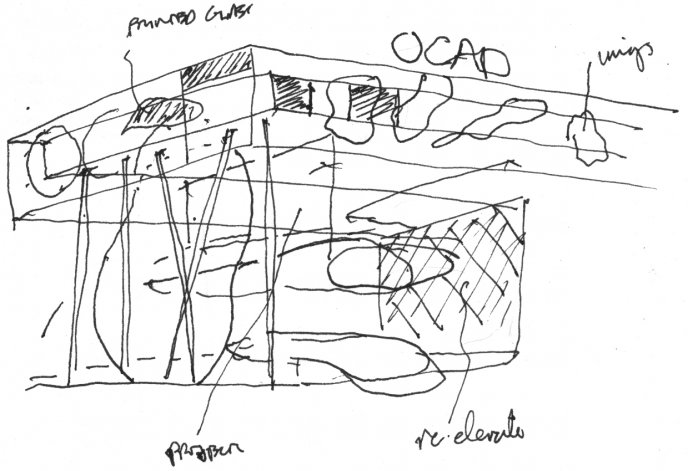
Sketches by Will Alsop courtesy of aLL Design
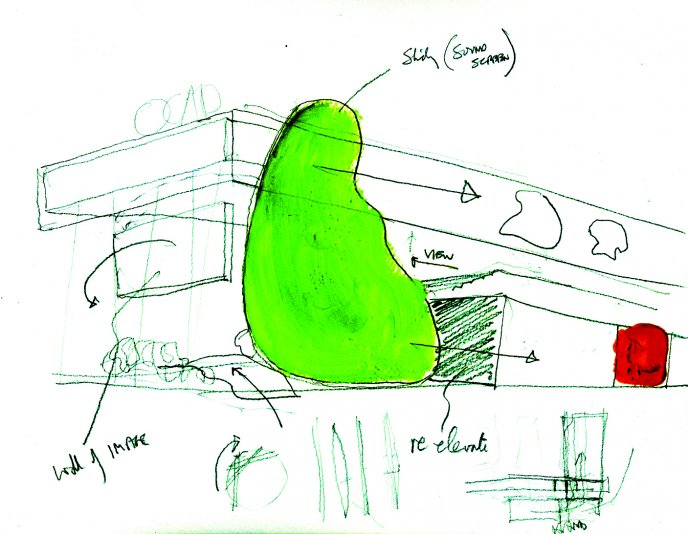
Sketches by Will Alsop courtesy of aLL Design
Students, faculty and staff aspired for a new public outdoor space – one that would allow OCAD University’s programming to extend beyond the building’s walls. Neighbours along McCaul Street were concerned about losing their treasured views of Grange Park – the chosen site being a parking lot located between them and the park. Everyone wanted to reconnect the street to the park, formerly only linked by a small paved road.
The resulting building responds to those ambitions. It floats above its site to provide a new public space – Butterfield Park – and rises just enough so that the bottom of the tabletop aligns to the top of the buildings across the street, preserving the views of neighbours. Finally, by raising the structure and building a new public space below, the building acts as a gateway to Grange Park – reconnecting McCaul to this greenspace.
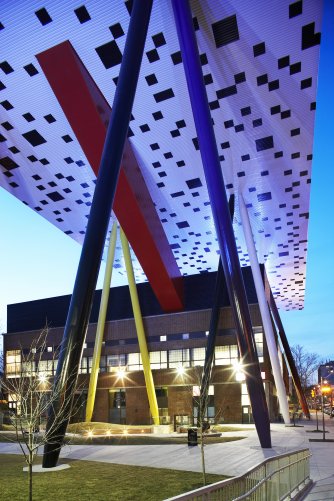
OCAD's new addition hovers over Butterfield Park – a new public space on McCaul Street.
Image Credit: R. Johnson, provided by OCAD University
10 Years in the Making
While the vision of reconnecting Grange Park to McCaul Street had emerged early in the consultation process, it would take more than a decade for this fundamental design element to be completed. For years, a fence and small strip of land sitting just off OCAD’s property separated Butterfield Park and the Grange. In 2017, as part of the Grange Park revitalization by PFS Studio, the fence came down and the original ambition of OCAD as a gateway to the Grange was finally fulfilled.
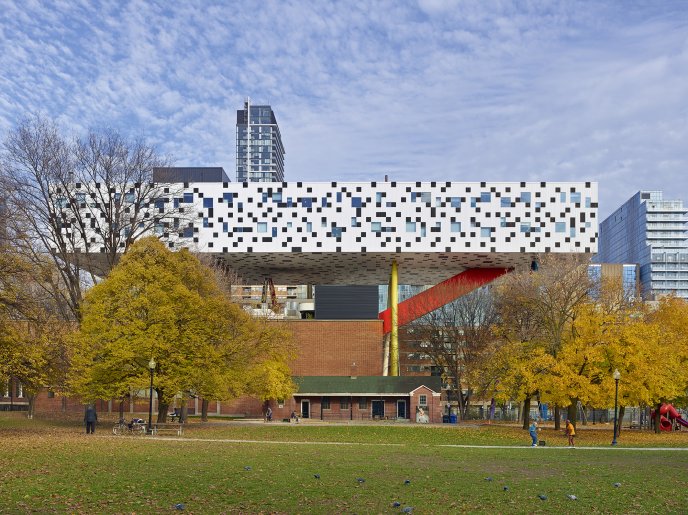
Image Credit: Shai Gil, provided by OCAD University
Toronto’s Cultural Renaissance
OCAD’s Sharp Centre of Design is one of eight buildings in Toronto that marked what has been dubbed the city’s “Cultural Renaissance,” a period of significant investment and growth in the city’s cultural institutions and made visible through new buildings and additions showcasing high-quality design. Catalyzing this renaissance was a $233-million investment by the federal and provincial governments allocated to improve the region’s cultural infrastructure. These buildings strengthened the city’s reputation as an international economic and cultural capital, bolstered tourism and catalyzed a new age of design in Toronto.2
Lecture starts at 23:53
This post forms part of our World Architecture Day Queen’s Park Picks 2018 series in which we asked Ontario’s Members of Provincial Parliament to nominate a prominent building, past or present, in their riding for a chance to learn more about it. Check out the rest of the series to learn more about great buildings across the province!
The OAA would like to thank aLL Design, IBI Group and OCAD University for the information, images and drawings that made this blOAAg post possible.
Additional Sources
Will Alsop in Conversation with Christopher Hume: The Sharp Centre for Design & Beyond. Accessed electronically: https://www.youtube.com/watch?v=aka3RhpAplE1
Jenkins, Barbara. “Toronto’s Cultural Renaissance” in Canadian Journal of Communication. Vol 30, No 1 (2005), accessed electronically: https://cjc-online.ca/index.php/journal/article/view%20/1417/1523 2
IBI Group is the legacy firm of Robbie/Young + Wright Architects.